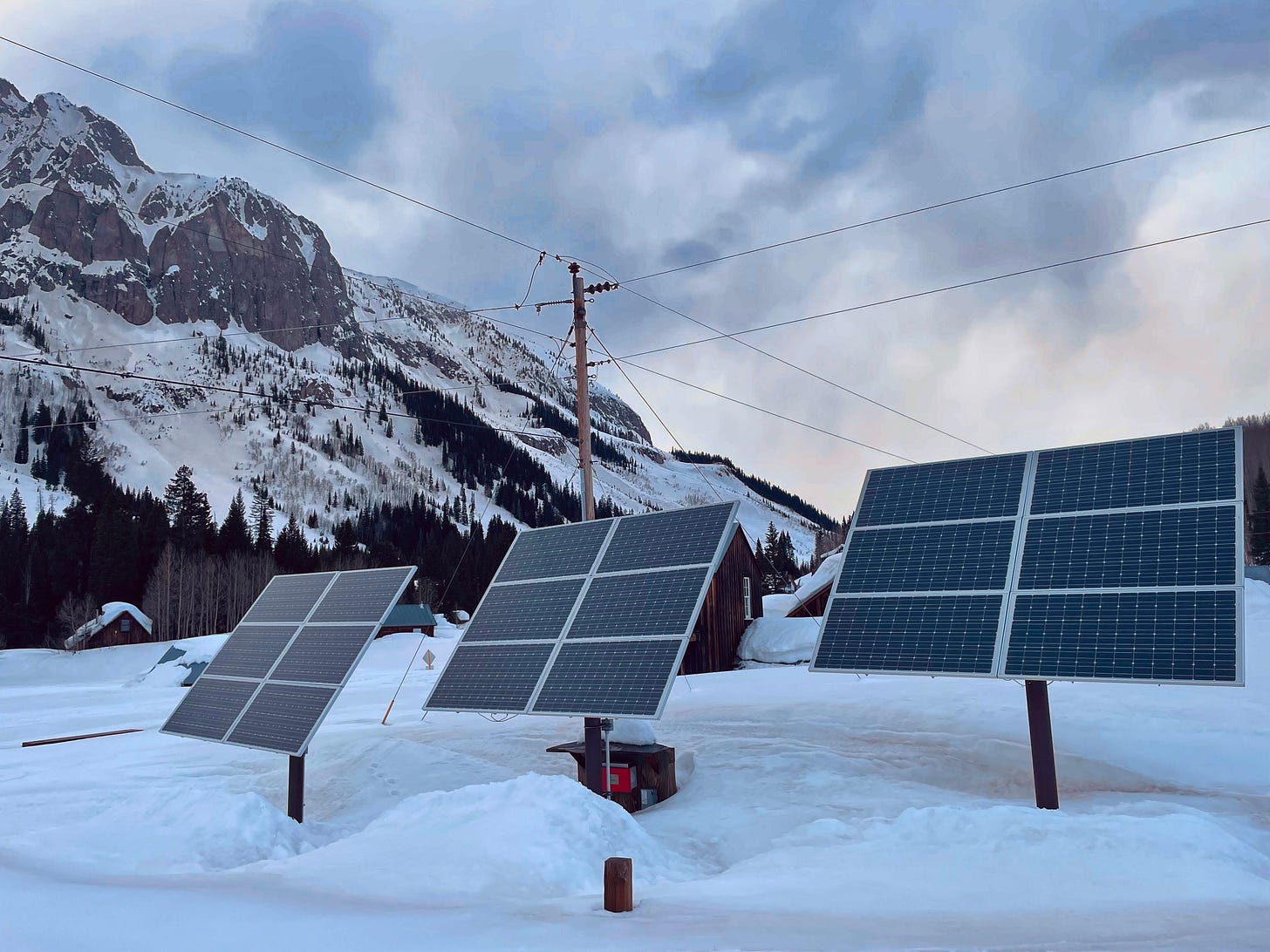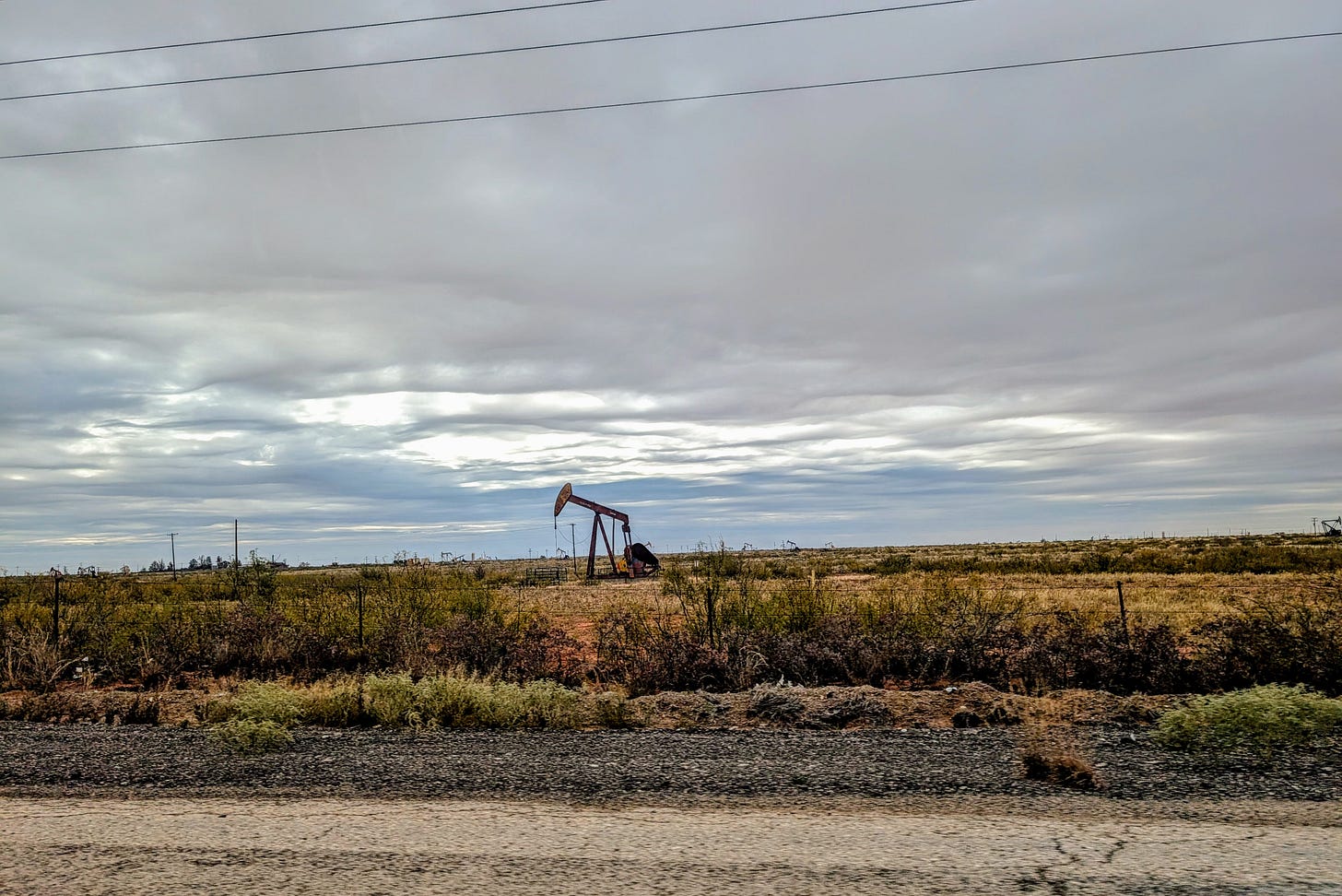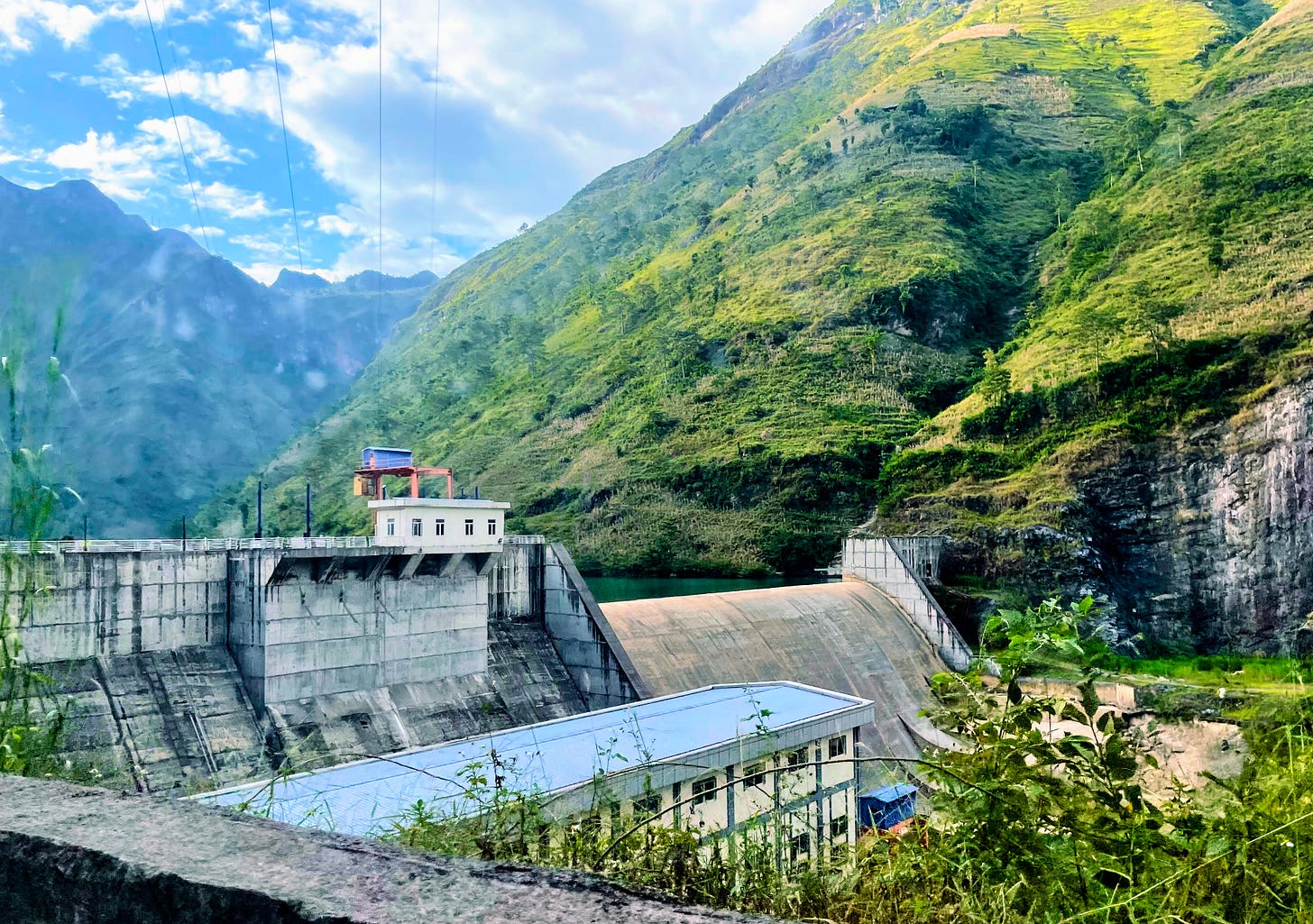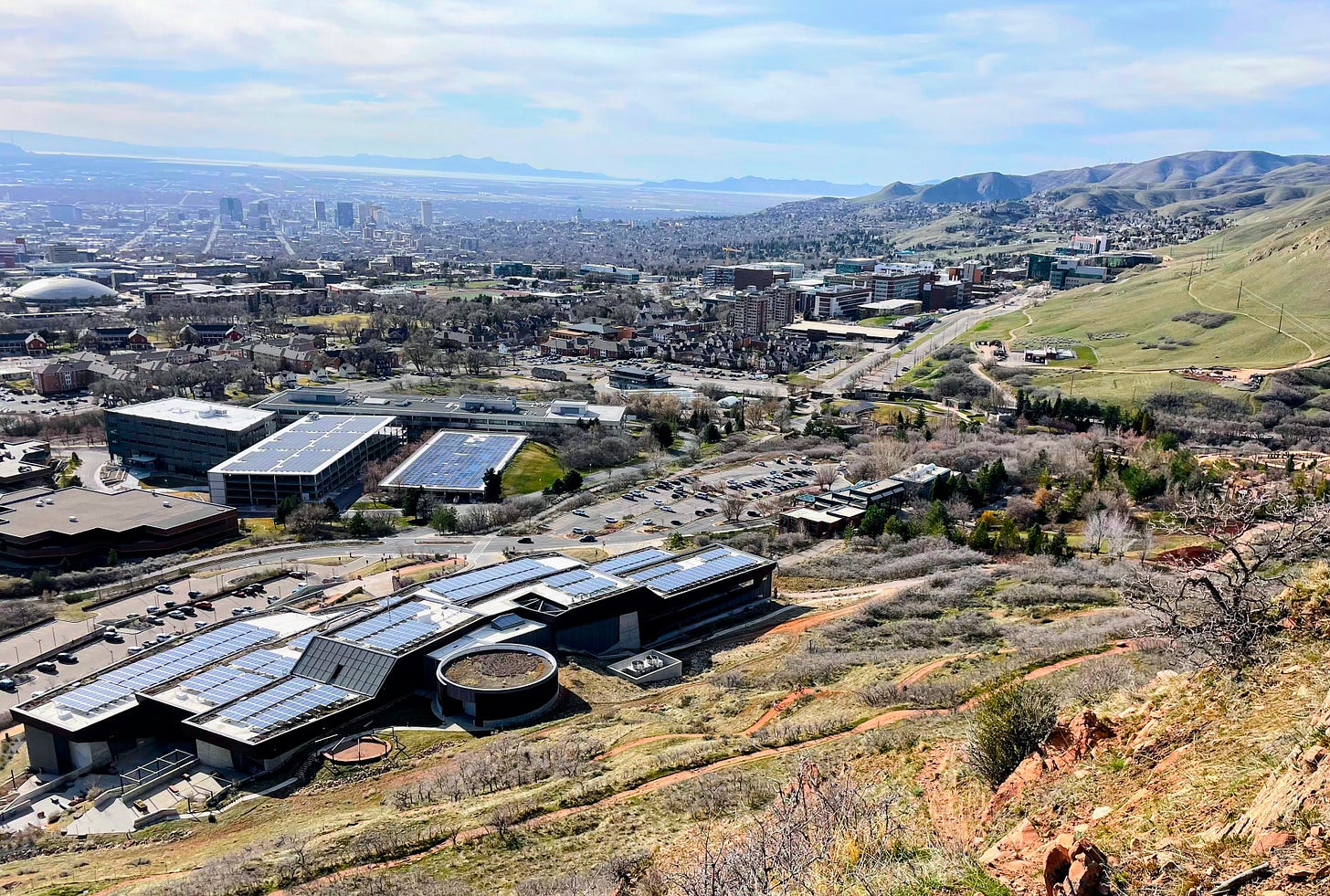Can Bitcoin Mining Promote Green Energy?
Washing those Orange Pills 'til they're Green

Hello all, it’s been a while! Happy New Year, and thank you for bearing with me as I focus on other writing projects — namely, a book.
The past few months, I’ve managed to interview a lot of brilliant, fascinating people, including:
An Egyptian media CEO
Queer men who fled Libya after enduring persecution and torture
A professor and author of a book on the Arab Spring
A former war journalist and documentary filmmaker who now lives on a farm with her family without internet access
Numerous employees of Gaza Sky Geeks, an amazing Palestinian organization I’ve worked with for years
I hope to share these stories here over time, and many more.
For now, here’s a post on the climate implications of ~cryptocurrency~. Given the fires in LA, and that President Musk and his side piece Trump will soon enter the Oval Office, this seemed as good a time as any to write it.
As always, thanks for reading. Happy 2025, and try not to spend too much time online. I doubt it’ll be much good for our brains this year. the next four. TBD.
Many in the cryptocurrency space have lately promoted the idea that — rather than requiring energy consumption equivalent to that of certain small countries — Bitcoin mining could in fact operate to promote green energy.
It’s slippery math (and rhetoric), but does it work? Let’s dig in to find out!
Joining me in this endeavor is a guest 🥳. Please welcome Emma Roach, a former Google coworker and brilliant, kind friend. She studied neuroscience at Johns Hopkins before leading a team of quantitative researchers in Google’s Next Billion Users organization, where I met her. Since leaving Google she’s taken another badass turn toward climate activism, teaming up with the Merz Institute to address the human behaviors upstream of ecological overshoot and disaster.
She recently came across Resistance Money: A Philosophical Case for Bitcoin, penned by a trio of philosophers-turned-Bitcoin enthusiasts. The book’s authors argue that Bitcoin mining might actually promote the expansion of clean energy infrastructure so vital to easing us off fossil fuels. Suffice to say this flies in the face of whole heaps of growing contrary evidence, so we wanted to investigate the idea. This took us a long while to put together, and we’re excited to finally put it out there 💪.
This post goes deep on cryptocurrency, the logistics of green energy, and the philosophical underpinnings of our economy. It required a lot of background reading, and is long and at times complex — so buckle up! Emma and I decided to construct a “Socratic Dialogue” of sorts in writing this, freeing us up to argue for views we might not otherwise comfortably take.
I’ll say now that we’re both deeply skeptical of this, but do think it’s a conversation worth having. One of the challenges of finding information about Bitcoin is that it’s almost exclusively presented by Bitcoin advocates — a group that tends, to say the least, toward the evangelical. Our hope is that this dialogue might open the conversation to others who, like ourselves, come into ideas around crypto — how to say? — skeptical as hell.
Skeptical Sam: So Bitcoin “mining” doesn’t actually involve any physical mining, right….?
Bitcoin Brody: That’s right. Bitcoin mining amounts to using heavy-duty computers to solve cryptographic puzzles. Think of it like running through all the possible combinations of a very big, complicated combination lock. Once the solution is found, it’s known to all. But it takes a lot of time and work to get there.
Bitcoin is, at its core, a decentralized ledger — a sort of database, really — of peer-to-peer financial transactions. Miners compete to verify and record new transactions in the blockchain (database), which helps ensure the whole network keeps running. And they’re rewarded newly-minted Bitcoins for their effort. There’s a longer illustrated explanation of all this here if you’re interested.
Skeptical Sam: My understanding is this is very energy-intensive. Why is all this “mining work” necessary for Bitcoin? We don’t need to mine anything to wire bank money or send dollars with Venmo, right?
Bitcoin Brody: Yes, crypto-mining requires a lot of energy. But that’s intentional — it’s a feature, not a bug. All that energy ensures the security of Bitcoin as a store of value, resistant to counterfeit, theft, and double-spending. And the network can do all this without the centralized authority and overhead of third parties like banks, governments, and creditors.
The Bitcoin network is comprised of three kinds of players:
Users — people who want to send and receive Bitcoin
Miners — compete to publish new transactions and claim rewards
Nodes — “referee” computers that verify submitted transactions
Because solving the puzzle — mining — is both very hard and quickly verifiable by the referee nodes, miners can’t fake the creation of new Bitcoin blocks. This lies at the heart of what makes Bitcoin valid and secure without centralized authority, which we call “proof of work”: a universally verifiable, un-spoofable validation of the computing effort that went into finding a solution.
And all this mining requires expensive specialized hardware, cooling, and a ton of electricity. That’s the “cost” of Bitcoin’s security.
Skeptical Sam: But the Ethereum network switched to a different consensus mechanism called “proof of stake” in 2022, and there haven’t been any successful attacks on that network yet. Is Bitcoin’s hesitancy to switch to this system just an example of the FUD (Fear, Uncertainty, and Doubt) cryptocurrency advocates always accuse skeptics of 😉?
Bitcoin Brody: It’s true that “proof of stake” uses less energy than the Bitcoin “proof of work.” This is because it rewards publication rights via lottery, and doesn’t require new mining.
The problem with proof of stake is that a publisher can “stake” as much of their currency as they wish in an attempt to gain more — and so the rich get richer, which I think we can all agree is already a huge problem in the world! And besides, some crypto security experts have expressed concerns with proof of stake, which hasn’t yet withstood the test of time like Bitcoin’s “proof of work” model.
Skeptical Sam: Okay, but really there’s a lot of evidence that mining requires a ton of energy use. Like, more than the entire state of Washington each year — and even more than the Netherlands, with a population of around 18 million. New York Times says it’s “as if another New York City’s worth of residences were now drawing on the nation’s power supply.”
The Bitcoin network’s energy consumption has evidently increased at least tenfold over the past decade, and even China banned crypto-mining in 2021, in part because of environmental concerns. It’s pretty hard to square this with the idea of “sustainability”, no?
Bitcoin Brody: But many industries require far more energy than Bitcoin mining! This raises some tricky questions around what we deem “worthwhile” energy uses. Are the data centers powering AI chatbots a “good” use of energy? A recent study found that as few as ten ChatGPT queries consumes an astonishing 16 oz. of water! What about countless factories pumping out consumer crap we don’t need, and then big, polluting ships taking it back and forth across oceans? Underlying this sentiment is a value judgment that is murky at best. Who gets to decide that mining is “worthless”?
So what is Bitcoin “worth” when we have many other options to send and receive money? It’s not often said, but we lose something in our heavy reliance on banks, creditors, and other financial institutions. We may sacrifice money (fees) and convenience (transfer limits and speed), and even freedom, autonomy, and privacy: people regularly experience bias and persecution in our current banking system because of their ethnicity, gender, and political beliefs. An alternative to traditional third-party finance can be a lifeline for those suffering under oppression or abuse.
So that’s why I think Bitcoin is worthwhile. I can see that you’re still fixated on the energy aspect though, so how about this? Because Bitcoin mining can be done anywhere, at any time, the industry may even be able to use “stranded” energy. This could even encourage the creation of green energy.
Skeptical Sam: Okay, you’ve intrigued me. What’s “stranded” energy?
Bitcoin Brody: Bitcoin miners can set up operations nearly anywhere, and run almost anytime of day or night — and they can shut off without losing the work already done to earn coins. This means mining can happen when demand for electricity is “off-peak,” and miners can shut off power when the rest of the network needs it most.
All this is important for miners because with so many competing for rewards, there’s a very thin margin of profitability. Miners must purchase increasingly expensive machines to stay competitive, and lower energy costs can make their operations more efficient and less costly.
Demand on power grids fluctuates throughout the day and year. It goes quite high on summer afternoons as homes and businesses all turn on the AC at once, and winter mornings when families awake and turn up their heat. Utilities that rely increasingly on green energy sources like wind and solar to electrify grids are challenged by these patterns of power generation, as they don’t necessarily match demand. Solar power may work great in the summer but unreliably in winter, when cloud cover makes panels less productive. And sometimes green energy sources produce too much power: imagine a windy, cool summer night when most residents don’t require home heating or cooling, but local windmills nevertheless generate a great deal of electricity.
Some big efforts are invested in finding clever, large-scale batteries to allow utilities to better store surplus green energy and release it over time as demand dictates. Google’s X is experimenting with a solution called Malta that would heat salt, and later utilize the dissipating energy as it cools, generating electricity on a grid. And some have tested ideas like using cranes to stack humongous, heavy blocks to store potential energy for future use. Big tech companies have begun investing heavily in nuclear energy to power data centers, too.
Meantime, long-term energy storage is a challenge for green energy, and the generated power is often “curtailed” — in other words, stranded or wasted, because there just isn’t enough demand to use it. Some academics have argued that data centers and Bitcoin mining operations could be positioned on green energy grids to “level out” energy use and utilize this curtailed energy when no one else can. And because Bitcoin mining can be conducted almost anywhere, and turned on and off quickly, it can in theory operate on such grids without additional power creation.

Finally, there’s the problem of methane flaring. A side effect of oil drilling is that vast amounts of methane gas also get released into the air. (Methane gas is more commonly known by the innocuous nickname “natural gas,” but really it’s methane, and quite harmful.) And because it’s released inconsistently and in remote places, this methane largely goes unused. Oil drillers burn off this gas in a process called “flaring,” which generates the little torches of light you can see burning beside oil fields in the wild, and even from space.
Researchers recently discovered that flaring releases five times the previously estimated amount of methane into the environment. Methane is more than eighty times more effective at warming the climate than carbon dioxide, and the World Bank estimates that gas flares at global oil sites emit at least 350 million tons of CO2 equivalent into the atmosphere each year. This is more than the annual emissions of the entire UK, and equal to nearly eighty-two million more cars on the road
But several companies have found ways to colocate mining operations near oil wells and methane fields, utilizing the released natural gas that would otherwise be wasted. According to Crusoe, a company that mines Bitcoin and provisions data centers, this process — as employed by Giga, another crypto-mining company — ”reduces CO2-equivalent emissions by about 63% compared to continued flaring.”

Skeptical Sam: This is a nice idea. But the World Bank is already working with governments and energy producers to reduce flaring, outside whatever Bitcoin efforts are happening. And isn’t there a risk this just creates further incentive to drill more oil?
Bitcoin Brody: Admittedly, sure. But as green energy becomes more affordable — many renewable energy prices are already competitive with those of fossil fuels — the hope is that practices like oil drilling and methane flaring will diminish on their own. And what’s the harm in both pushing for global government action, and taking independent action today? That World Bank report aims for zero global routine flaring by 2030. Even if that happens, Bitcoin miners are working on this now.
Skeptical Sam: I’m hearing the word “hope” a lot here. Even with all this potential for Bitcoin mining to use curtailed green energy and stranded natural gas — it does seem that lots of mining still relies on fossil fuels to power their operations?
The University of Cambridge Business School estimated as of 2022 that around two-thirds of the total electricity mix of all Bitcoin operations came from fossil fuels. Some within the crypto community have praised Ted Cruz (R-TX) for vocally supporting Bitcoin — ostensibly because he supports “financial freedom,” and says Bitcoin mining boosts green energy. But Texas is also a large producer of inexpensive fossil fuel energy, and one could easily view his embrace of crypto mining cynically, as yet another (massive) consumer of Texas oil.
Doug Burgum, North Dakota’s former governor, has warmly embraced crypto mining in his state too. His office announced that planned data center and Bitcoin mining there “will further cement our state’s growing reputation as a hub…. thanks to our incredibly reliable, affordable and redundant power supply and a climate that lowers cooling costs for data center operations….” Fossil fuels, it’s worth noting, contribute nearly a quarter to North Dakota’s yearly GDP.
As the New York Times reports, “renewable generation takes years to build and usually requires commitments from customers who can guarantee that they will buy power for a decade or more.” According to Dr. Jesse Jenkins at Princeton, “the Bitcoin operations’ near-constant power demand is more likely to keep fossil fuel plants in business than to lead to more renewable energy.”
They even highlight how some Bitcoin mining operators in Texas earned more money turning off their operations during peak times than they did mining Bitcoin. The state has paid the mining operators tens of millions of dollars — possibly hundreds of millions, of taxpayer money! — just to not use power for a while. And they earn additional money while they regularly operate, just because they’ve agreed to turn off their energy requirements as-needed in the future. (If they’re asked to.) One company apparently even told investors that a future storm like Texas’ disastrous Winter Storm Uri in 2021 could present a “significant business opportunity.” Which is pretty… wild.

Bitcoin Brody: All of that isn’t great today, it’s true. But by providing a steady source of demand, Bitcoin mining may actually lead to multitudes of new green energy investments.
Just look at Gridless in Sub-Saharan Africa. It was started by Erik Hersman, who’s done a lot of important, reputable work with technology in Africa. He founded Ushahidi, a crowdsourced mapping app that helped Kenyans avoid violence in the aftermath of 2007’s disputed presidential election, and has since been used by the UN in Haiti, the Nepalese army in response to a 2015 earthquake, Humanitarian Tracker mapping violence during Syria’s civil war, and more. So he knows what he’s doing.
Gridless works to create Bitcoin mining operations in areas of rural Africa without enough energy demand to merit long-term investment by energy producers. Each home in some villages today might only use enough energy to power a few light bulbs and phone chargers each day. And this is a problem for financing new energy projects, because it’s not enough power demand to guarantee a return on investment.
But Bitcoin mining can create that demand. This can bring in energy infrastructure investment using hydroelectricity, solar and wind generation to build an electric “minigrid.” And the nearby communities benefit too: not only do local residents enjoy a steady supply of low-cost power from the minigrid, Gridless distributes Bitcoin mining profits back to them, too.

Skeptical Sam: Okay, well that actually sounds pretty neat. Though I do question how “renewable” we can call hydroelectricity — which requires building dams and can really screw with ecosystems. And Gridless works in a very defined niche, right? Bitcoin miners gearing up in Texas, North Dakota and Pennsylvania aren’t exactly creating demand for energy where it didn’t exist already.
And never mind the raw materials needed to construct the infrastructure needed to shift our entire economy to “renewable” energy, which by a recent estimate far exceed previous estimates. Or the continued environmental and human rights degradation involved in extracting minerals needed for renewables, like cobalt and lithium. Or that wind turbines and solar panels must be replaced every twenty to thirty years.
Bitcoin Brody: Well do you want renewables or not 😉! Anyway, think of it like this: just as Gridless incentivizes investment in hydro and solar electricity in parts of rural Africa, Bitcoin mining in places like the US can incentivize the creation of new green energy sources here. If we want to get America off fossil fuels, we can’t magically switch all the coal and natural gas plants to wind and solar — to your point, we need entirely new plants. And Bitcoin miners hungry for dirt-cheap energy, able to locate almost anywhere, can push for that to happen.
Skeptical Sam: Or they could just keep using coal and natural gas for as long as those stay cheap, just like so many other industries do.
Bitcoin Brody: Sigh, well yes. That could happen too.
Skeptical Sam: It makes me wonder what our world would be like if we didn’t consume such vast quantities of energy — if we didn’t treat the environment like a bottomless piggy bank. What if we were more concerned with the wellbeing of ourselves and the planet than the “bottom line?” What if we could step off the relentless consumerist hamster wheel fueling climate change?
Bitcoin Brody: That’s well said, friend. But who’s being pollyannaish now 😉?
Song of the Week: Gossip — Real Power






Wow!! This is may be the most informative piece I’ve ever read on Bitcoin mining and the impacts on the environment. Fantastic research and ability to break it down (via natural q and a style) that a “normie” like myself can follow and understand. Well done!!! 💥